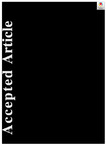Transcriptional frontloading contributes to cross‐tolerance between stressors
| dc.contributor.author | Collins, M | |
| dc.contributor.author | Clark, MS | |
| dc.contributor.author | Spicer, John | |
| dc.contributor.author | Truebano, M | |
| dc.date.accessioned | 2020-10-21T17:34:49Z | |
| dc.date.available | 2020-10-21T17:34:49Z | |
| dc.date.issued | 2020-10-03 | |
| dc.identifier.issn | 1752-4571 | |
| dc.identifier.issn | 1752-4571 | |
| dc.identifier.other | eva.13142 | |
| dc.identifier.uri | http://hdl.handle.net/10026.1/16576 | |
| dc.description.abstract |
<jats:title>Abstract</jats:title><jats:p>The adaptive value of phenotypic plasticity for performance under single stressors is well documented. However, plasticity may only truly be adaptive in the natural multifactorial environment if it confers resilience to stressors of a different nature, a phenomenon known as cross‐tolerance. An understanding of the mechanistic basis of cross‐tolerance is essential to aid prediction of species resilience to future environmental change. Here, we identified mechanisms underpinning cross‐tolerance between two stressors predicted to increasingly challenge aquatic ecosystems under climate change, chronic warming and hypoxia, in an ecologically‐important aquatic invertebrate. Warm acclimation improved hypoxic performance through an adaptive hypometabolic strategy and changes in the expression of hundreds of genes that are important in the response to hypoxia. These ‘frontloaded’ genes showed a reduced reaction to hypoxia in the warm acclimated compared to the cold acclimated group. Frontloaded genes included stress indicators, immune response and protein synthesis genes that are protective at the cellular level. We conclude that increased constitutive gene expression as a result of warm acclimation reduced the requirement for inducible stress responses to hypoxia. We propose that transcriptional frontloading contributes to cross‐tolerance between stressors and may promote fitness of organisms in environments increasingly challenged by multiple anthropogenic threats.</jats:p> | |
| dc.format.extent | 577-587 | |
| dc.format.medium | Electronic-eCollection | |
| dc.language | en | |
| dc.language.iso | en | |
| dc.publisher | Wiley | |
| dc.subject | cross-tolerance | |
| dc.subject | environmental change | |
| dc.subject | frontloading | |
| dc.subject | multistressor | |
| dc.subject | plasticity | |
| dc.title | Transcriptional frontloading contributes to cross‐tolerance between stressors | |
| dc.type | journal-article | |
| dc.type | Journal Article | |
| plymouth.author-url | https://www.webofscience.com/api/gateway?GWVersion=2&SrcApp=PARTNER_APP&SrcAuth=LinksAMR&KeyUT=WOS:000580981200001&DestLinkType=FullRecord&DestApp=ALL_WOS&UsrCustomerID=11bb513d99f797142bcfeffcc58ea008 | |
| plymouth.issue | 2 | |
| plymouth.volume | 14 | |
| plymouth.publication-status | Published | |
| plymouth.journal | Evolutionary Applications | |
| dc.identifier.doi | 10.1111/eva.13142 | |
| plymouth.organisational-group | /Plymouth | |
| plymouth.organisational-group | /Plymouth/Faculty of Science and Engineering | |
| plymouth.organisational-group | /Plymouth/Faculty of Science and Engineering/School of Biological and Marine Sciences | |
| plymouth.organisational-group | /Plymouth/REF 2021 Researchers by UoA | |
| plymouth.organisational-group | /Plymouth/REF 2021 Researchers by UoA/UoA07 Earth Systems and Environmental Sciences | |
| plymouth.organisational-group | /Plymouth/Research Groups | |
| plymouth.organisational-group | /Plymouth/Research Groups/Marine Institute | |
| plymouth.organisational-group | /Plymouth/Users by role | |
| plymouth.organisational-group | /Plymouth/Users by role/Academics | |
| dc.publisher.place | England | |
| dcterms.dateAccepted | 2020-09-16 | |
| dc.rights.embargodate | 2020-10-23 | |
| dc.identifier.eissn | 1752-4571 | |
| dc.rights.embargoperiod | Not known | |
| rioxxterms.versionofrecord | 10.1111/eva.13142 | |
| rioxxterms.licenseref.uri | http://www.rioxx.net/licenses/all-rights-reserved | |
| rioxxterms.licenseref.startdate | 2020-10-03 | |
| rioxxterms.type | Journal Article/Review |


